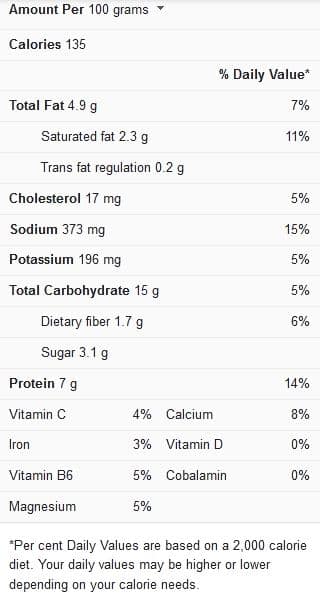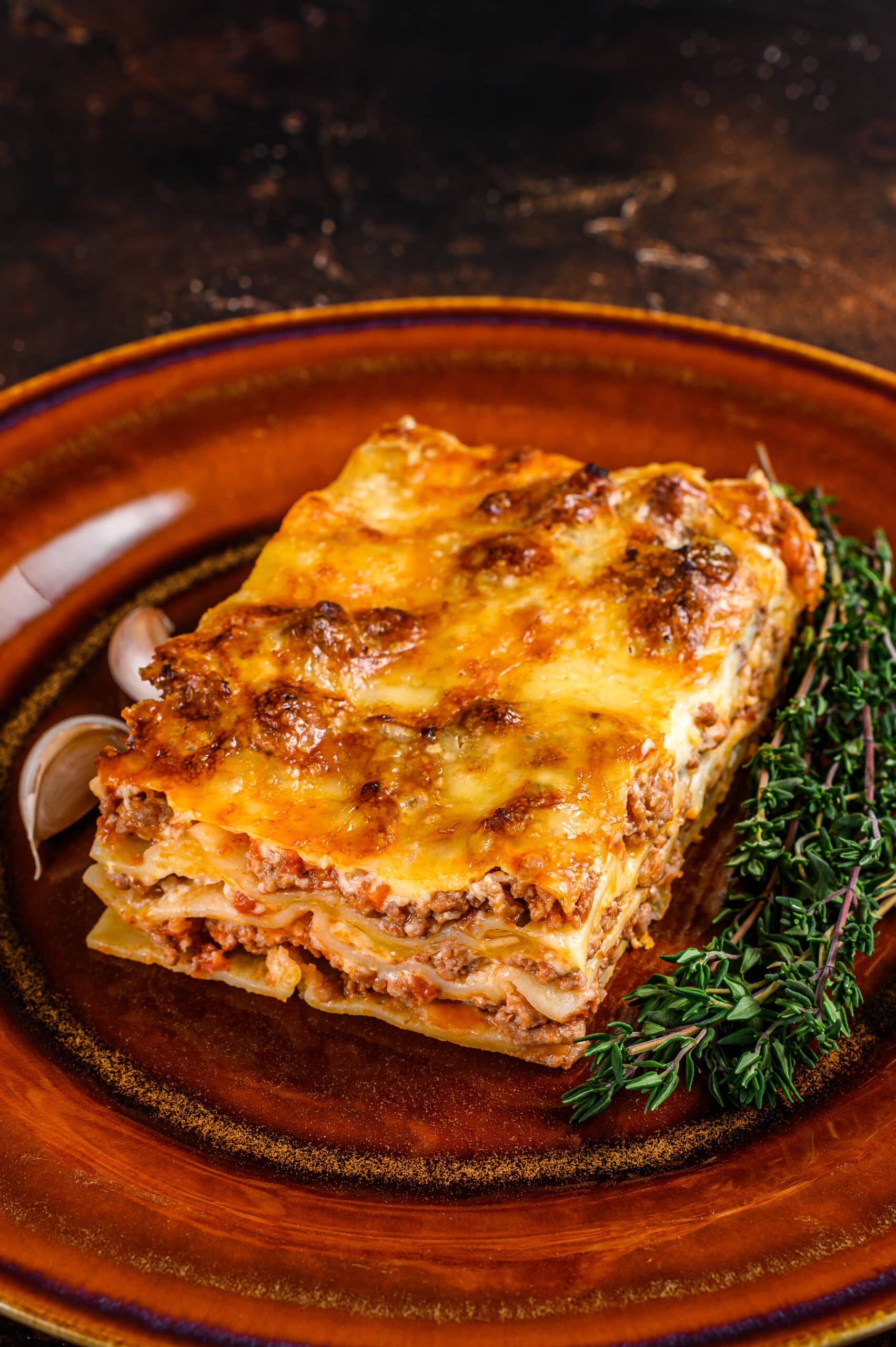The favorite Italian lasagne, comprising layers of rich minced beef and a creamy sauce, is the epitome of comfort food. Lasagne recipes are ideal for serving large groups, and they also tend to keep nicely, which means you can enjoy leftovers days after. If you’re a fan, then you’ll want to learn how to cook lasagne and get delicious results every time you try.
Learn the best way to cook lasagne in order to guarantee flavorful results. We’ll advise that you take note of our timing guidelines to ensure well-cooked lasagne. Also, look out for helpful tips, recommendations, and instructions.
Lasagne nutrition facts

Tips for cooking lasagne
The following tips have been compiled to help you get the best out of cooking lasagne:
Storing and reheating leftovers – One major fun part of making lasagna is eating the leftovers! The lasagna will last at least 5 days in the refrigerator. Individual slices can be reheated in the microwave, or the entire casserole can be reheated in the oven at 350°F until it gets bubbling.
Freezing and reheating tips – Lasagnas can also be frozen either in baked or unbaked forms.
- To freeze an unbaked lasagna, first, line the pan with foil, then assemble the lasagna as directed in your recipe. Allow it to cool totally before freezing it to a solid-state. Remove the frozen lasagna block from the baking dish, wrap it in foil again, and freeze for up to a month.
- To reheat a frozen lasagna that hasn’t been baked, follow these steps. Take the lasagna out of the freezer, then peel off all of the foil layers. Transfer the lasagne to the initial casserole dish, cover it, then refrigerate overnight to thaw. Bake as directed in your recipe once it has sufficiently thawed.
- To freeze baked lasagna, wrap the pan using foil before constructing the lasagne, then build and bake according to the recipe’s instructions. Allow cooling completely before freezing until solid. Remove the frozen lasagna block from the baking dish, wrap it in foil again, and freeze for up to a month.
- To reheat a baked lasagna, take it out of the freezer, then peel off all the layers of foil. Move the lasagne to the initial casserole dish, cover it, and refrigerate overnight to thaw. Warm the entire casserole (wrapped in foil) in the oven at 350°F until bubbling again after it has defrosted.
View this post on Instagram
Cooking Time for Lasagne
Ideally, you should adhere to the timing guidelines in the table below when cooking lasagne:
| Cooking procedure | Cooking time |
| Cooking lasagne at 190 degrees Celsius/375 degrees Fahrenheit/Gas 5 | 30 to 40 minutes |

Lasagne (6 to 8 servings)
Ingredients
- olive oil
- 1 onion, finely chopped
- 1 carrot, chopped
- 2 sticks of celery, chopped
- 1 bay leaf
- 3 garlic cloves, crushed
- 1lb of beef mince, about 2 ounces
- 2 tablespoons of tomato purée
- 125ml of red wine
- 1 14-ounce tin of chopped tomatoes
- 400 to 500ml of beef stock
- sea salt and freshly ground black pepper
For the béchamel sauce
- 2½ ounces of unsalted butter
- 2½ ounces of plain flour
- 1 liter of full-fat milk
- ¼ teaspoon of freshly grated nutmeg
To assemble the lasagne
- 9 to 10½ ounces of dried lasagne sheets that don’t require soaking
- 5½ ounces of parmesan, to serve
- extra virgin olive oil, for drizzling
Instructions
- Heat a heavy-bottomed skillet or casserole over medium-high heat for the sauce. Add a dollop of oil to the pan once it’s hot, then add the onion, carrot, celery, and bay leaf, and simmer for 5 to 6 minutes, or until the ingredients are softened. Cook for another two minutes after adding the garlic.
- Increase the heat to high and add the mince to the pan, breaking up any large chunks as you go, until the meat turns brown all over. Add salt and pepper to taste. When the meat is completely browned, pour in the tomato purée and stir well. Cook this mixture for two minutes before adding the red wine and increasing the heat to allow the wine to bubble. Cook for 3 to 4 minutes, scraping the bottom of the pan for any stuck-on chunks.
- Pour the tomatoes into the pan, stir well, and bring the mixture to a simmer before adding the stock. Allow simmering rapidly, then reduce to low heat and cook for another hour, stirring occasionally, until the sauce has thickened and reduced but is still wet. If the mixture appears to be too dry at any time, add the leftover stock and, if necessary, a little water to top it up. Season the mixture with salt and pepper as needed, then leave it aside to sit while you prepare the béchamel sauce.
- Set up the oven to a temperature of 190 degrees Celsius/375 degrees Fahrenheit/Gas 5 and let it heat up. Melt the butter in a medium, heavy-bottom saucepan, then toss in the flour, ensuring to cook for about 3 to 4 minutes in total, or until the mix resembles powdered almonds. Beat the milk in portions until it is smooth. Season to taste with salt and pepper as needed. Cook, stirring occasionally, for 4 to 5 minutes over low heat; do this after adding the nutmeg, until the sauce thickens.
- Cover the bottom of a medium lasagne dish with one-third of the beef sauce and a quarter portion of the béchamel sauce, then cover this mixture with lasagne sheets, splitting any that don’t fit to ensure that everything is covered. (It’s not a problem if the sheets are somewhat overlapping.) A quarter of the parmesan cheese should be sprinkled on top.
- Repeat the technique to make two more layers. Finish off with one final layer of lasagne sheets with the leftover béchamel, be careful and make sure that you completely cover all of the lasagne sheets. The remaining parmesan cheese should be sprinkled on top.
- Drizzle some extra virgin olive oil over the top, lay on a baking tray, and bake the lasagne for about 30 to 40 minutes, do this until it turns golden brown and bubbling. Serve with a crispy green salad and hearty wedges
The cooking procedure for this recipe has many steps, but if followed carefully, you’ll arrive at ultimately satisfactory and flavorful lasagne. If you’d like more recipe ideas for lasagne, then you should check out this video recipe.
